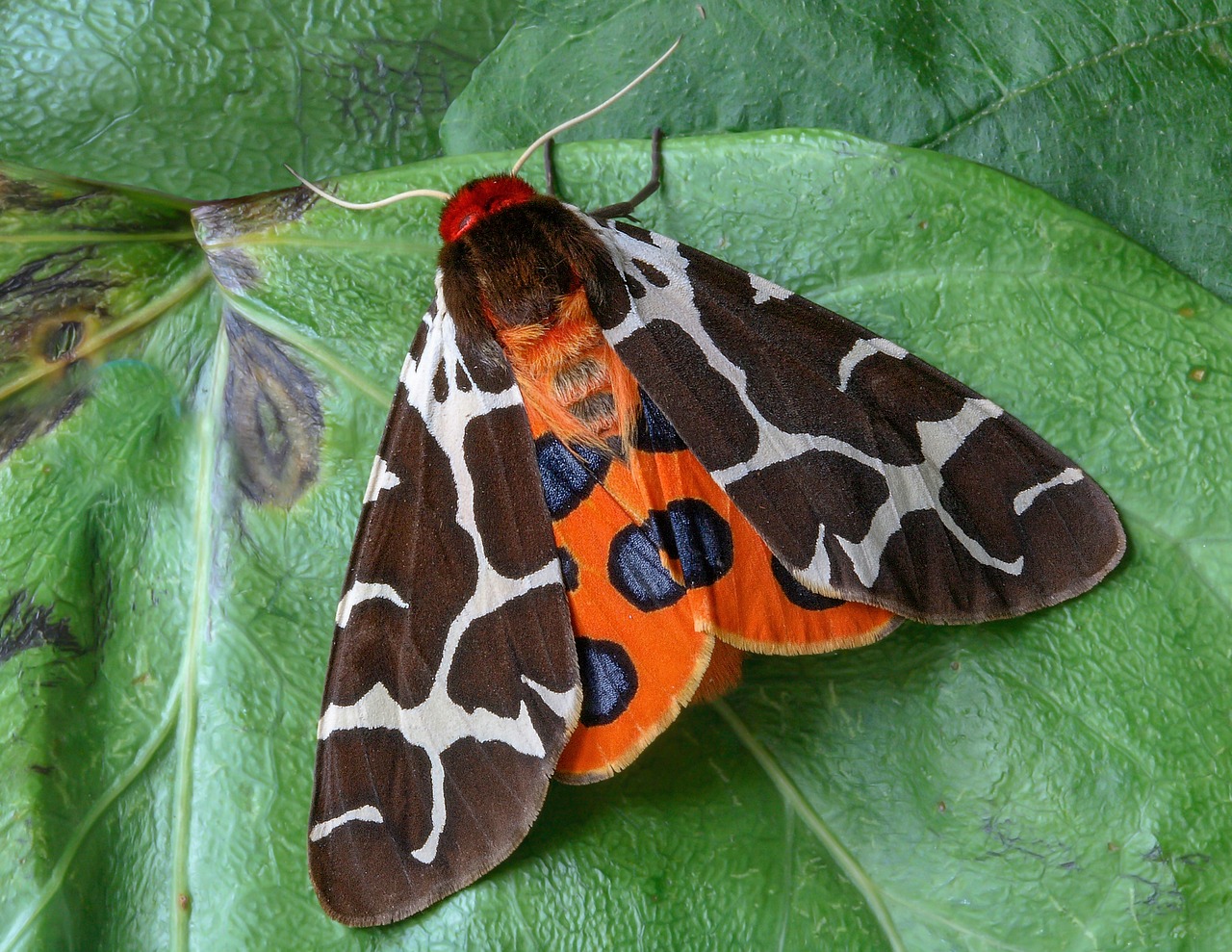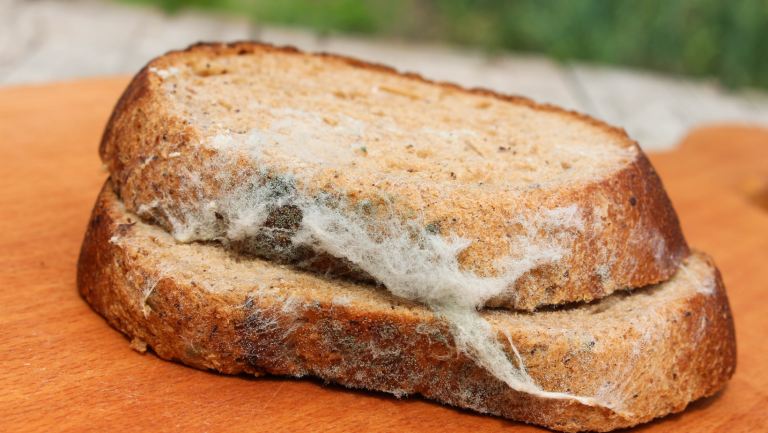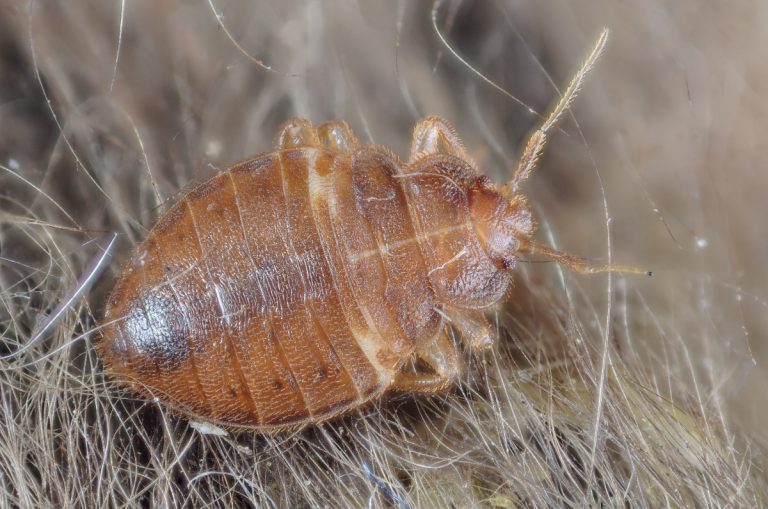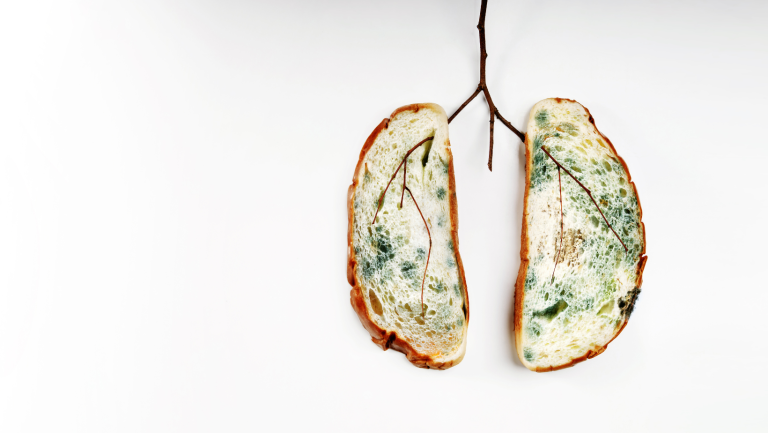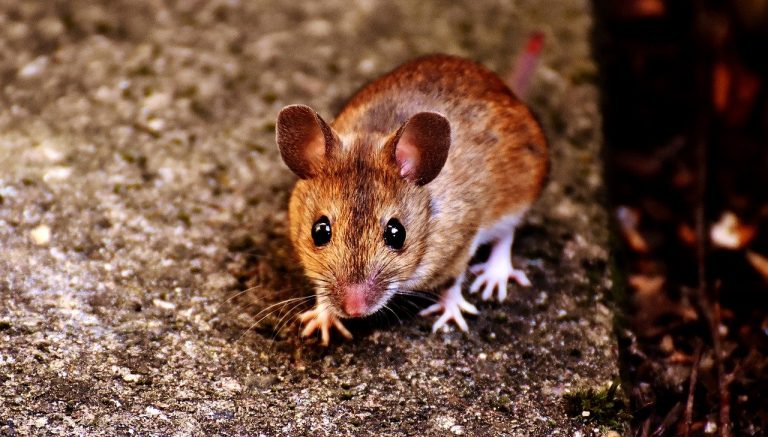How to Get Rid of Moths? Natural, Herbal, and Chemical Treatment
Moths are a paraphyletic group of insects that includes all members of the order Lepidoptera that are not butterflies. Approximately, 160,000 species of moths are estimated to exist and many of which are yet to be described. Most species of moths are nocturnal, but there are also crepuscular and diurnal species.
Moths are different from butterflies which form a monophyletic group. Butterflies have thin antennae and have small balls or clubs at the end of their antennae. Moth antennae are feathery with no ball at the end. The divisions are named by this principle: ‘club-antennae’ (Rhopalocera) or ‘varied-antennae’ (Heterocera). Lepidoptera differs between butterflies and other organisms due to evolving a special characteristic of having the tube-like proboscis in the Middle Triassic which allows them to acquire nectar from flowering plants.
Some commonly known moth types are described below –
- Goldcap moss eater moth (Epimartyria auricrinella) – This moth is of family ‘Micropterigidae’ and found throughout the eastern US and southeastern Canada. Their habitat is swampy or boggy marshland and they prefer to live in shade.
However, they do not eat moss as the name suggests but feed on a moss-like plant called liverworts. They are medium brown with some flashings of pale brown.
- Norway maple seedminer (Ectoedemia sericopeza) – Family-Nepticulidae. This moth is found throughout the eastern US and some areas across Europe, including Scandinavia, the UK, and Italy. Its wingspan is between 0.2 to 0.4 inches and is mostly black and cream.
- Small birch leafminer (Ectoedemia occultella) Family – Nepticulidae – They mine through long leaves, leaving a blotch on the leaf with a dark spot in the center where larvae can be found.
This moth has gray forewings with cream markings and pale gray forewings. The males have black-colored heads and the females have yellow-orange heads.
- Maple leafcutter moth (Paraclemensia acerifoliella) – Family Incurvariidae – These moths feed on different types of maples and are found throughout south-eastern Canada and mid to eastern regions of the US.
It has an orange head and forewings of metallic blue-green color.
- Tropical tobacco moth (Setomorpha rutella) – Family Tineidae – These feed on dried food products such as rice, seeds, and grains. It has got the name because it likes to feed on dried tobacco leaves.
It is found throughout North America, South America, Asia, Europe, Africa, and Australia.
- Yucca moth (Tegeticula yuccasella) – Family Prodoxidae – These can be found throughout the US and southern Canada in the areas where the yucca plant grows. They are pale-colored moths with creamy white forewings, sometimes flashed with tan.
- Southern longhorn moth (Adella caeruleella) – Family Adelidae – These moths are common in the southern US. They are also found in milder climates of Canada. They have metallic markings on their wings and are diurnal, partaking most of the activity in the day and resting at night.
- European grain moths (Nemapogon granella) – Family Tineidae – These are widespread moths found in Europe, Asia, and Australia. As it likes to feed on corn and grain products, it is also called a ‘corn moth’.
Because of this liking, it is always found in transportation vehicles, easily moving from one place to another. - Carpet moths (Tricophaga tapetzella) – Family Tineidae – Also known as tapestry moths, they feed on naturally fibrous material such as fur, feather, and animal skin. They invade bird’s nests frequently as they find these things there aplenty.
They are found across the world traveling in between June and September.
- Evergreen bagworm moth (Thyridopteryx ephemeraeformis) – Family Psychidae – This moth is common in the southern climatic states of the US.
It is a serious pest in its larvae stage. They are aggressive feeders and feast on 50 different species of evergreen deciduous trees and shrubs. The adult moths look similar to a bee, with a fluffy and chunky body. - Sweet potato leaf miner (Bedellia somnulentella) – Family Bedellidae – This moth is seen widely in Europe, Asia, North and South America, Australia, and Africa. It mines the foliage of host plants, though pupation occurs outside the leaf, without a cocoon.
- Oak leaf skeletonizer moth (Bucculatrix ainsliella) – Family Bucculatricidae – These moths are seen throughout southern Canada and most of the US. Recently they have been found in parts of Europe, including Belgium, Germany, and Holland. They feed on oak trees as the name suggests and nearly destroy the foliage completely. They appear in shades of mottled brown.
- Azalea leaf miner (Caloptilia azaleella) – Family Gracillariidae – These distinctive moths native in Japan but travelled to the Netherlands through imported plants are now found across the world.
They can be seen wherever the Azaleas grow. They live on Azaleas leaves and roll them up into a cone.
How to Get Rid of Indoor Moths?
Though moths are not dangerous pests for home, they can cause heavy damage to fabrics especially cotton and wool, in the house and eat dry foods like bread and pasta. They may also damage household items. Moths like to gather and fly around the well-lit area in your house too.
Though, they won’t carry diseases but need to take care of.
Natural Home Remedies to Get Rid of Indoor Moths
There is plenty you can do to get rid of them and we can see some of the remedies below –
- Fill the house with cedar – You can use cedar oil in a spray bottle diluted with water or in a diffuser that can spread the smell of cedar. Pheromone in cedar repels moths and other insects.
- Sticky trap – You can use the sticky trap by covering it with moth pheromones to attract moths and get them stuck to the surface.
Once they get stuck there, they eventually die.
- Wash clothes that contain larvae or eggs – If possible, use hot water and dry heat in the dryer. For clothes that can’t be washed or dried hot, put wet clothes in the freezer for a day to kill larvae and eggs.
- Combine dried, crushed, and powdered herbs – Combine lavender, bay leaves, cloves rosemary, and thyme to make a dried, powdered herb. Hang a bag of it anywhere you keep cloth and food. Moths hate the odor of these herbs. You can also dilute the essential oils of these herbs and spray them on your belongings and clothes to get rid of moths.
- Clean floors, carpet, and moldings – Clean your house with a vacuum, dusting cloths, and eco-friendly cleaners to keep your house dust-free to keep the moths away. Do not let any larvae or eggs entangled with a vacuum bag or dusting cloth, or else, they will grow and develop.
- Freeze clothes with signs of moths – Keep these items in the freezer for at least 24 hours to make sure any larvae are killed off.
- Brush clean the clothes – Whenever you come from outside, ensure to clean your clothes with a brush as moth eggs can easily infiltrate your closet by affixing themselves.
- Use Vinegar – Wash and scrub any areas you found larvae or eggs with vinegar and water solution.
- Lavender – Fill sachets with dried lavender, or dip cotton balls in lavender essential oil. Place them in your closets, drawers, and boxes. Lavender smell is a huge moth repellent.
- Mint – Mint leaves are great moth repellent. Keep dried mint or leaves among your clothes to get the maximum effect out of it.
You can also apply peppermint oil poured on cotton balls to protect your clothes and belongings before they get moth-infested.
- Cloves, Thymes, and Rosemary – Fill a sachet bag with cloves, thyme, rosemary, or a combination of these herbs to keep moths at bay for long period. Replace the contents every six months.
Moths hate these herbs’ smell and they won’t enter these areas.
- Cedar – Cedar wood has long been known to have a moth-repelling effect as it works well. If you are having a cedar wood closet or chest, make full use of it.
Otherwise, you can possess some cedar chips and place them at the appropriate places.
- Storage of clothes – Storing all your clothes in a sealed container is equally important as you can still have moth infestation even if you implement natural methods to get rid of them. Closets, chests, or plastic storage containers can be used to store the clothes so that moths won’t get to them.
- Dry the storage area – Not only storing in sealed condition is important but you can also take extra precaution by keeping the storage place fully dry. Moths prefer a moist environment, so, the storage must be at a higher, dryer area like an attic and not in the basement.
- Take pest control service help – When you feel you can’t remove all the moths, then take the help of professionals.
How to Get Rid of Moths with Pets in the House?
While moths do not necessarily infest pests and also their prevention method does not interact with the pet’s activity, it is better to have a track on whether any of the methods is going to affect the pet. Usually, we take measures to protect our clothes and this means we do treatment in a closed area where pets don’t peep.
However, if you are treating your furniture or structure to get rid of moths, ensure that you are using conventional methods rather than chemicals. This will eliminate any risk of contamination to your pet because of the treatment we are doing. Using cedarwood, peppermint oil, lavender oil, and similar will be the safest way to protect your pets.
Chemical Treatment to Get Rid of Indoor Moths
Indoor moths can create havoc in your cupboard by ruining much of your cotton and wool clothing as they feed on it. If proper care is not taken, you face a huge loss. Timely corrective actions are to be taken to save such losses.
- Moth Traps – There are different types of moth traps available consisting ProPest Pheronet Pantry Pest Trap, X-Lure RTU Combo Trap, ProPest Pantry Moth, and Beetle Trap, etc.
- Clothes Moths Insecticide – Delta Dust Insecticide, Bedlam Insecticide Aerosol, Riptide 5% Pyrethrin ULV, Tempo 1% Dust are used as an insecticide to get rid of moths in closet and chests.
- Pyrethrin – Pyrethrin breaks down rapidly after its usage, so, it does not persist in the environment more than the required time. Therefore, it is considered safe for use.
How to Get Rid of Outdoor Moths?
If the moth infestation is outdoors, don’t mistake it for a normal one. This may easily and quickly spread indoors too as moths may find way in through human or pets. You must act promptly and take necessary preventive measures to see them off.
Natural Home Remedies to Get Rid of Outdoor Moths
You can adapt both natural and chemical remedies to get rid of moths but stopping them to enter inside is the best way to prevent infestation.
Follow the below methods to keep the moths at bay –
- Moth repellent sachet – Lay down the squarely cut cloth pieces and pour a few drops of essential oil on each cotton ball. Combined oils will be more effective. Hang the pouches with hooks near the entryways of your house. The scent will keep the moths away.
You can use lemongrass, cedar, rosemary, lavender, or thyme to make these repellents.
- Citronella moth repellent – You can stick the citronella torches in the ground at the perimeter of your house. During the evening hours, you can light the citronella torches to prevent moths from entering your periphery.
- Use water trap – Fill a shallow bowl with few inches of water and add few drops of dish wash solution to it. The solution is to be placed just under the outdoor light so that the light reflection in the water will attract moths and on driving onto the water, they will sink in.
- Natural predators – One can think of using bats as the nocturnal natural predator of moths. Bats are great predators of other pests too. Though bat control is not in your hand, it’s worth trying.
- Eliminate caterpillars – Use the hot water with added dish wash soap to kill the caterpillars. Here, you need to take more effort as you have to find, pluck and drop caterpillars in the hot water to eliminate the population.
- Outdoor lighting – Switch over to yellow light bulbs in the outside area as moths get attracted to the white light. You can also apply citronella over the lights when not in use. Citronella smell will be spread once you put the lights on and it will keep the moths away.
Chemical Treatment to Get Rid of Outdoor Moths
To tackle the moth’s problem on large scale, one must be equipped with the required chemicals. You need to apply them to get better results. If the infestation is heavy, then it is advisable to call professional services.
Usually, the following methods are adapted –
- Multipurpose insect killer – This Pyrethrin-based aerosol works quicker on almost all flying insects and it needs little to disinfect. It results in quicker elimination and is a good option to be used in garages, patios, and other areas.
- Clear zone refills – These refills are safe for use where pets and children are present. Lasts up to 30-40 days when set to spray every 15 minutes making it automated.
- Maxxthor – If there is a large infestation, spray it on all plants and turf. It repels moths effectively and kills them in a day or two.
With this, you can get rid of current moths as well as keep the new away due to its lasting effect. You can use 1 oz per gallon of water with the help of a pump sprayer or 5 oz with 5-gallon water with the help of a hand hose sprayer.
- Bithor – This unique product lasts longer for 3-6 months up to a year. It works best on non-porous surfaces but can be used on cement or a similar structure. The re-establishment of moths is completely taken care of in case you use Bithor.
Mix 2 oz per gallon that can be effectively spread over 500 sq. ft area.
- Moth traps – These are the hand-held zapper and light trap products. The zapper is a charged grid of electricity and can kill the moth by just touching it. Since moths are attracted to light, a light trap with 110 volts of power is a unique option to kill the moths instantly.
How to Get Rid of Moths in Your Yard?
If you are having trouble with moths in your yard and want to get rid of them, then you must have some knowledge about their habitats in general. Moths are nocturnal and get attracted to the light. Some moth infestations are highly destructive therefore treating them is very important. You can follow the below steps to do so –
- Replace white light bulbs with yellow light bulbs as moths and other insects get attracted to the white light. Yellow light in the yard will act as a moth-repelling factor.
- Apply citronella oil to the yard light every day when you switch it off. When you turn it on again at night, it will heat the dried oil spreading the citronella’s smell that repels the moth.
- Light citronella candles or torch at night in the yard which will spread citronella’s smell in the air and will keep the moths away.
- Place a bowl filled with half water and few drops of liquid detergent added to it, right below the porch light.
How to Get Rid of Moths from Trees?
The larvae of moths create webs to move around the trees and find food. Male gypsy moths fly to the flightless female moths and breed during the summer. The female moth lays around 300 to 500 eggs in July or August.
The eggs overwinter in the trees and hatch in May. Small caterpillars build gypsy moth nests, and these help them wind-dispersed to other trees. After 10 to 14 days, the larvae emerge as a moth.
To get rid of moths from trees, there are a few ways to deal with it.
Ways to Get Rid of Moths from Trees
Deciduous trees can manage infestation for 2-3 years as the leaves fall off but the extreme infestations may kill the tree.
- Remove moth eggs from the tree when they first appear.
- Inspect for beige eggs in the stone walls, woodpiles, and outdoor furniture.
- Eliminate the egg by pouring boiling water on them in a container.
- Use domestic insecticides or trim the tree branches with infestation if possible.
These simple precautions will reduce the risk of trees getting infested by the moths.
How to Find Moth Nests?
If you want to find the moth nests, then, first you need to identify the signs of infestation. The first thing people commonly see is the damage caused to clothes, fabric, or carpets but there are also other indications of a moth infestation –
- Small maggot-like larvae (moth caterpillars)
- Silken tubes or cases in which the moth larvae live.
- Pupae (silk cocoons) from which the larvae eventually emerge as adult moths.
- Adult moths that are often crawling than flying.
Moths generally do not nest for living, taking shelter, or bearing young. They move from place to place in search of food, sheltering in most convenient places such as underneath leaves or doorways or the cracks of the building.
Only in their pupal stage, most moth species build cocoons to protect them during metamorphosis. They do this by spinning silk around them. They also incorporate other materials such as bits and pieces of leaves or hair from their bodies. Many caterpillars roll themselves up in a leaf and use their silk to seal it shut. These cocoons are sometimes attached to the underside of a leaf or twig, though sometimes you may find it on the ground.
How to Treat Moth Bites?
The vast majority of moths don’t have a mouth and are not known to bite. However, during their life cycle, when they are in the caterpillar phase, they do tend to eat fabric and can cause skin irritation and worse in humans.
The irritation is caused by stings, not bites. Out of around 165000 moth species, only 150 can sting. As caterpillars mature and become moths, they lose their tiny teeth and their mouths become atrophied and they disappear.
However, moths from the genus Calyptra, also known as vampire moths or fruit-piercing moths, have a feeding tube with tiny projections that can pierce human skin. Some other species of moths, to defend against their predators, have spiny hairs that can be lodged in human skin. It can provoke a reaction of red patches of bumps that looks similar to hives. These bumps may burn and sting for several minutes.
FAQs
How to Get Rid of Moths under Pavers?
The spray of citronella oil will prevent the moths to visit your pavers. Spray the citronella oil diluted with water regularly to keep them away.
Use a vacuum if the space allows doing so.
How to Get Rid of Moths around Pool?
To protect your pool from moth invasion, spread some mint or bay leaves regularly around the pool. Moths do not like the scent of these plants, so, they will keep away.
How to Get Rid of Moths with wings?
Use a sticky trap made from combined herbs that will attract moths. Once they try to eat it, they get stuck to the sticky surface making it impossible for them to fly again.
How to Get Rid of Giant Moths?
Giant moths can be killed by trapping them in a room and then, swatting them or using an electric hand-held zapper equipped with electricity.
How to Get Rid of Moths under Carpet?
Using a specially designed carpet spray to kill the moths can be tried or using the vacuum and removing the moths from the carpet will also help.
How Vegans Get Rid of Moths?
Since the moths are not a disease-causing threat, vegans will prefer to shove them out of the house by catching them in the net or similar things.
How to Get Rid of Moths in Refrigerator?
Indian moths or meal moths can be found in the refrigerator along with the food stored. Since they cannot survive in colder temperatures, they are no threat but the food can get contaminated, and thus, care needs to be taken while storing it.

